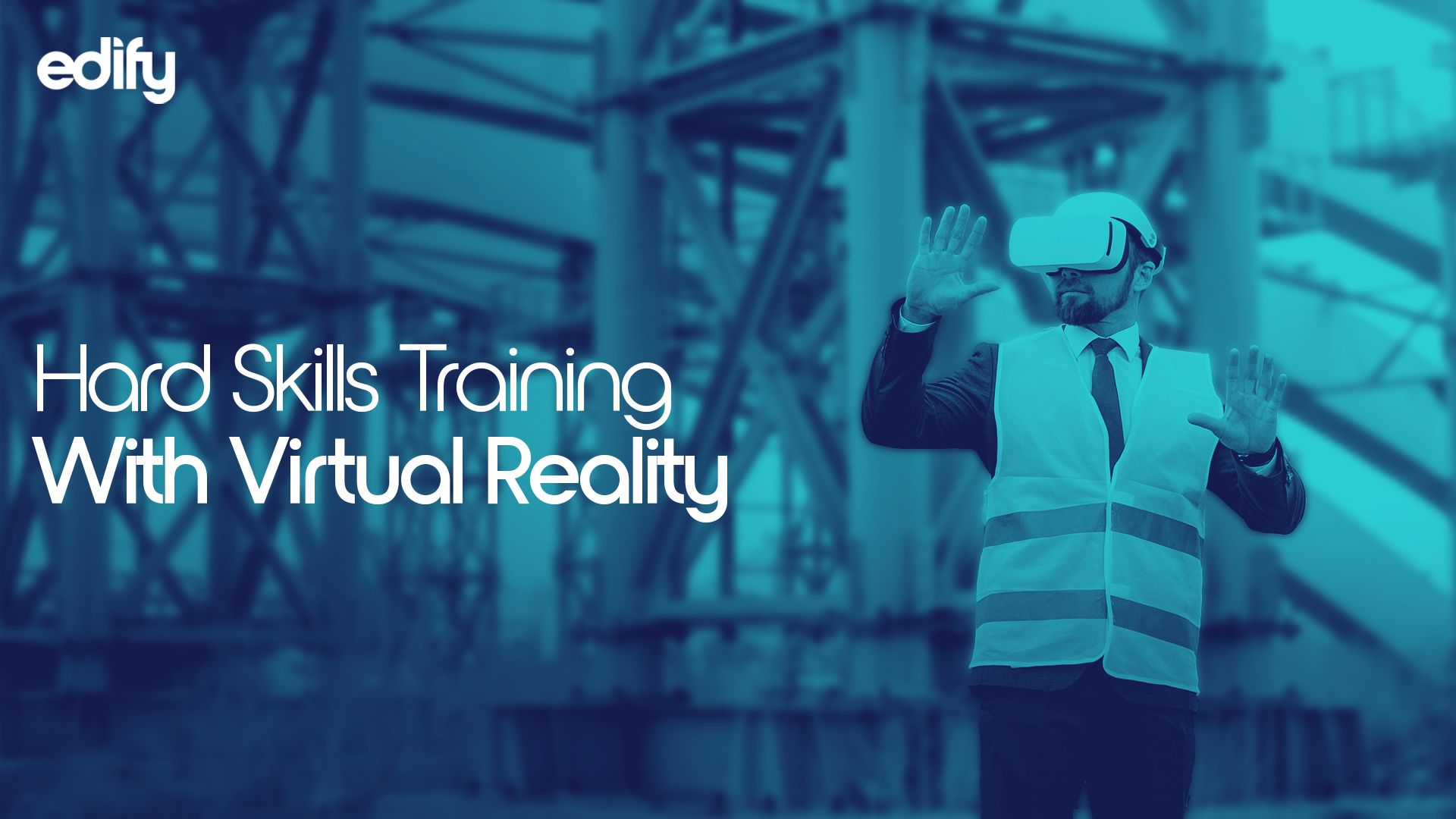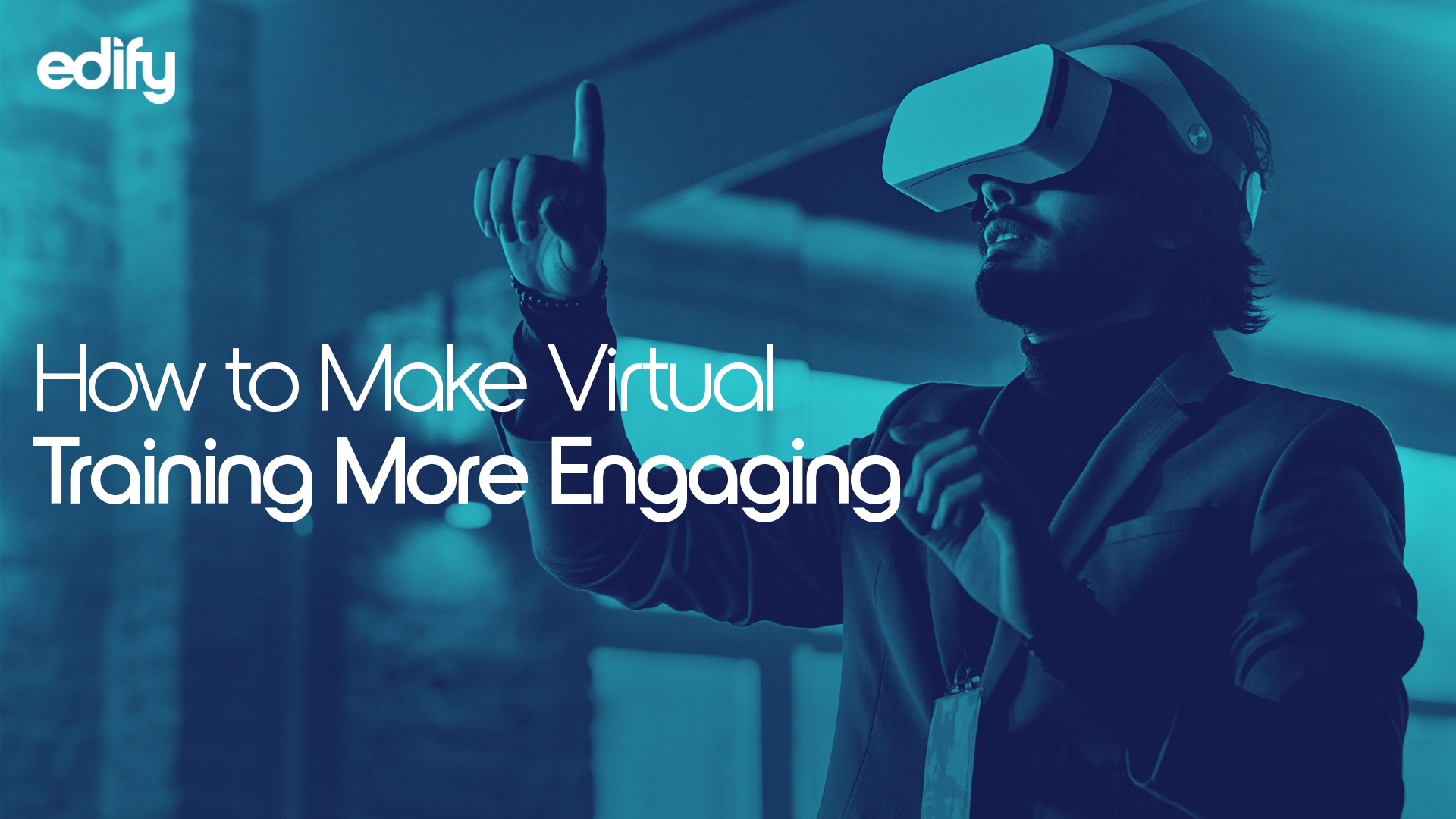Using virtual reality for STEM education
Have you ever considered using virtual reality for teaching STEM subjects?
Gone are the days of having to rely solely on chalk and talk learning. Now, there are opportunities to leverage new and emerging technologies in higher education to help engage students, boost learning outcomes, and override challenges such as lack of access to facilities or equipment. One of the emerging technologies that is already being applied in this sector is virtual reality.
In STEM subjects such as science, technology, engineering, and maths, there are clear opportunities to add value to a curriculum using virtual reality. VR could help medical students learn about the human body by enabling them to go inside the human body – virtually – and learn about it in a completely immersive way. It can open up access to sites or locations for engineering students. It could help chemistry students practise lab skills in a safe, controlled environment.
VR is an exciting new medium and there’s no doubt that it will become more embedded in education over the coming years. But, first, is there any evidence it works?
Does using virtual reality for STEM work?
There are a number of reports that support the use of virtual reality for STEM...
- A study compared students studying neuroanatomy using VR and a textbook or just a textbook. While there was no difference in outcome, students using virtual reality were more engaged and found the experience more enjoyable and more useful
- Another study found that students who received virtual reality training to help them complete a complex dental surgery were more confident and had more knowledge than students who reviewed a PowerPoint presentation
- A study exploring the use of virtual reality in an undergraduate chemistry course found that VR had a positive impact on students’ self-efficacy, interest, and lab anxiety
- Another study by the University of Warwick found that psychology students were better able to remember course material when using VR in comparison to textbook learning
- A study on the use of VR for software engineering students found that students taught using VR systems scored 12% higher on their final assessment than the control group
Now let’s look at some of the ways you can use virtual reality and immersive simulations to overcome some of the limitations of the real world...
5 ways to use virtual reality for STEM
1. VR for learning anatomy
Getting to grips with anatomy is a critical part of the curriculum for students of biology, nursing, medicine, and other STEM subjects. Learning about the human body equips students with the fundamental knowledge they need in order to become medical practitioners.
The challenge:
Learning about anatomy via 2D materials isn’t always easy. Getting a real understanding of something 3-dimensional from a 2D image in a textbook takes a bit of a cognitive leap. Even using cadavers to enable more hands-on learning of anatomy isn’t a perfect solution. There are ethical questions about the use of cadavers and issues around availability apply here too.
How VR solves this challenge:
Virtual reality transforms the learning experience. It makes learning anatomy much easier to understand because it enables students to learn anatomy in 3D. Students can also scale, rotate, and interact with 3D models and even go inside the human body for a 360° view. It’s not every day you can learn about the digestive process from inside the stomach, but you can with VR.
Edify use case:
2. VR for on-site visits
Site visits are an important part of the student learning experience. It gives them an inside view of a project and gets them thinking about all the elements of a project and how they come together. Plus, it enables them to see how their theoretical knowledge can be applied in the real world.
The challenge:
Students aren’t always able to go on-site. A location might be hundreds of miles away or expensive to visit for a large group. This can also limit trips to see iconic buildings and structures around the world. But not being able to see a site in the real world context can potentially make it more challenging for students to understand space and design requirements.
How VR solves this challenge:
Using immersive technology, it’s possible to create a virtual replica of the site. Students won’t just be able to see what the site looks like, in context, but they can walk through and immerse themselves in the space in a way that you simply can’t do with a 2D drawing. It also enables them to see their designs in process and to be able to collaborate with others more easily.
Edify use case:
3. VR for practising lab skills
Getting hands-on experiences in a lab is ideal for any student studying a STEM subject at university. It’s an opportunity to get practical experience in a laboratory and to learn specialist techniques. Not only that, but it can help students contextualise theoretical knowledge in a hands-on way.
The challenge:
Of course, real-world learning is best – and it certainly is considered the gold standard – but it’s not always as simple as that. Often, there is limited access to lab facilities. There might not be enough equipment for every student, which leaves schools having to schedule time slots for usage.
Secondly, that limited access to both space and equipment means that students don’t always get a chance to practise specialist techniques and lab skills as much as they need. This can potentially leave them feeling unprepared for when they do have to use these skills in the real world.
How VR solves this challenge:
Creating a virtual laboratory is a huge benefit to students. It widens the breadth of access to equipment and lab space, at any time. Additionally, it enables students to supplement and consolidate real-world learning with virtual learning, which has the added benefit of not having real-world consequences. In other words, students can effectively kill the patient and start again.
Edify use case:
4. VR for clinical skills training
Want to empower the next generation of medical professionals? Hands-on real-world experiences are really important of their development. However, virtual reality simulations can also function as an additional training method to augment and enhance the in-person learning experience.
The challenge:
Learning in a real-world environment comes with risk. Students may not always feel confident applying theoretical knowledge to a practical real-world environment. Virtual reality simulations bridge that gap, and help students engage in learning that looks and feels real, without risk.
How VR solves this challenge:
A virtual environment effectively enables healthcare students to develop core clinical skills in a safe and controlled environment. This gives them the opportunity to practise and repeat learning as many times as needed, without having to worry about ‘getting it wrong’ on a real patient. As a result, they’re equipped with everything they need to go into the real world and excel.
Edify use case:
- Take a look at this VR simulation where healthcare students can learn critical skills – safely
5. VR for field trips
Field trips function as a great way of bringing real-world context to classroom learning. They help to bridge the gap between the classroom and the real world and help consolidate learning for students. However, incorporating them into a higher education curriculum isn’t always easy.
The challenge:
Firstly, there are logistical costs to consider, such as affordability. Not every student will be able to cover the cost of a trip to a distant location, and this can lead to a two-tier system where some students go on the field trip and the rest have to stay at home. Not ideal for inclusivity.
Secondly, it’s not always possible to visit the places that are being taught. They may be difficult to reach or dangerous. They may be incredibly expensive to travel to. Or, they may no longer exist. We might be talking about a sacred archaeological site or a building as it was 100 years ago.
How VR solves this challenge:
Virtual reality enables educators to bring the site to the classroom. To bring the location to the lecture theatre. To go anywhere and do anything – to visit the furthest corner of the earth, to walk the surface of the moon, or see a historical site as it was during a particular point in history. You can even rethink how you view datasets and turn them into a fully immersive experience.
Edify use case:
Curious about how you could use virtual reality for STEM?
Find out more about how we partner with universities on our dedicated higher education page.







